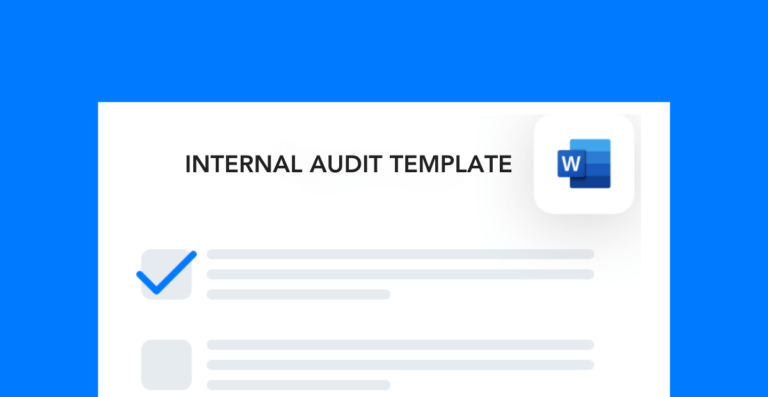Internal audit checklist [w/ template]
Here’s a simple internal audit checklist that you can use to assess your operation:
- Clearly define the focus of your audit.
- Establish the questions you want the audit to answer.
- Put together a team to conduct the audit.
- Create a list of all the documents, processes, and other variables you’ll need to review.
- Collect information via research, employee interviews, etc.
- Analyze collected data to answer the questions you outlined at the beginning of the process.
- Compile your findings into a report for key decision makers.
- Using information discovered in the audit, determine your top priority for improving that area of the business.
- Schedule and assign action items related to improvement projects.
- Upload your audit results to the company’s data management system so you can reference it when you audit that area again.
Free template!
This is a simple, one-page Word checklist that can help you get started with your internal audit.

Purpose of an internal audit
- What areas of the operation are working optimally? Adequately? Poorly?
- What are the major cost centers within this area of the business?
- Which elements of the existing process have the greatest positive/negative impact on the health of the company?
- Where are redundancies within the current system that can be transformed or removed?
- Is the overall investment in running this portion of the business worth the outcome?
- Are there any red flags that need immediate attention?
- How would you rate the overall performance of this area of the business and why?
As you can see, an internal audit is designed to uncover the true state of the business. The data your team collects during this process will help you determine your top priority moving forward.
Areas of the business to review
When you think of internal auditing, your mind may skip to things like accounting and finance. But there are many different types of audits you can do.
I might argue that auditing fewer elements of your business at a time can yield better insights. It all depends on how much time and money you have to complete an assessment and what you’re hoping to do with the results.
Here is a list of just some of the areas you may want to include in your internal audit:
- Equipment and tools
- Training
- Onboarding and offboarding
- Regulatory compliance
- Environmental, health, and safety measures
- Quality management
- Inventory
- Financial performance
- Employee engagement and satisfaction
- Company documentation
- Administrative performance and efficiency


